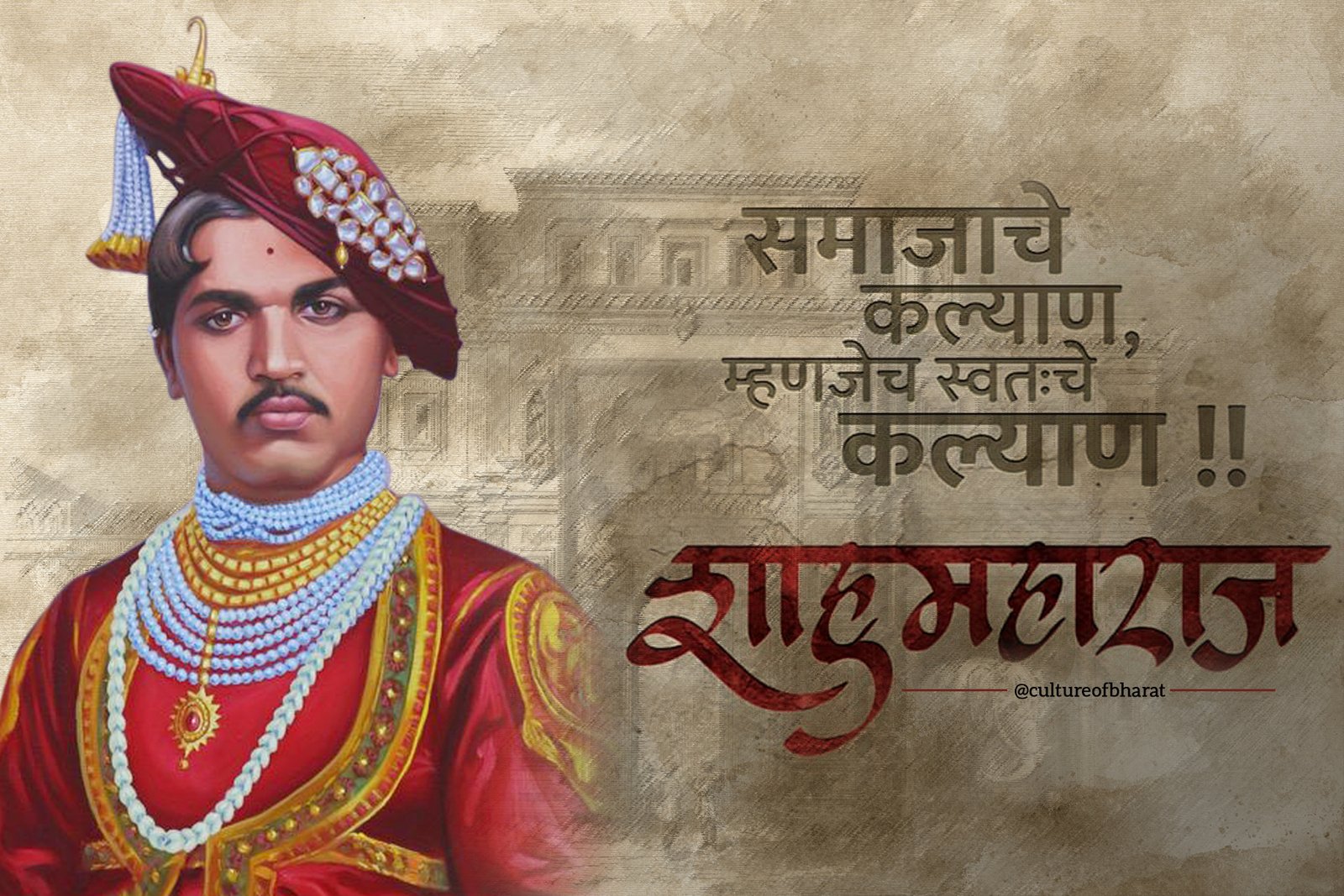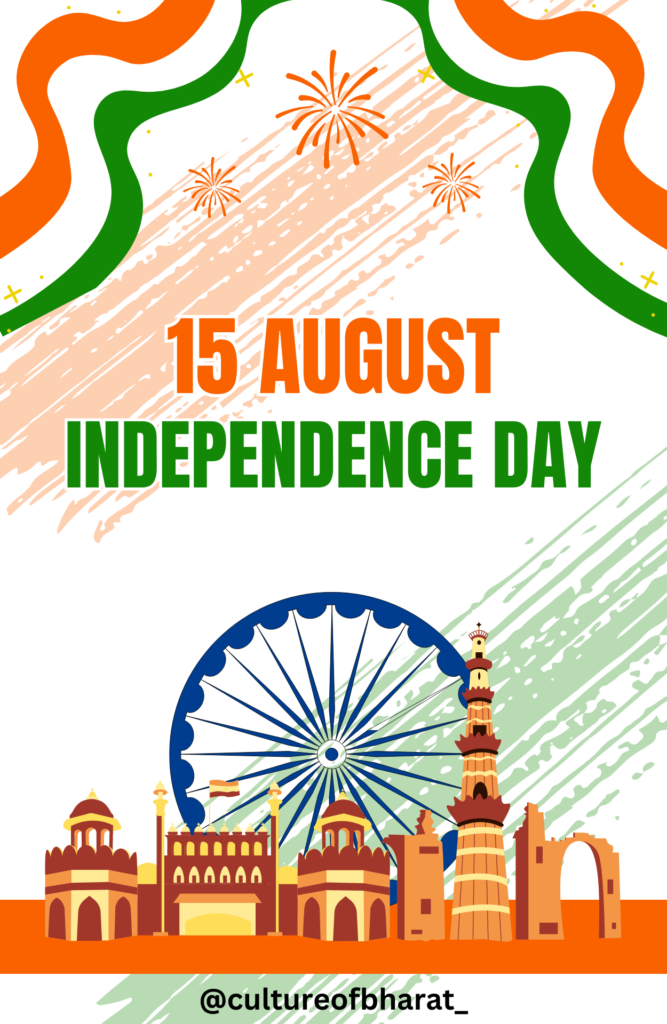Culture
of Bharat

Our Historical Pride

Rajashree Shahu Maharaj
On the auspicious occasion of Rajashree Shahu Maharaj’s birth anniversary, it is vital to remember and celebrate his life and contributions. Born on June 26, 1874, Shahu Maharaj’s reign brought significant changes to Maharashtra’s socio-economic and cultural landscape. His progressive policies and reforms laid the foundation for a more equitable society, making him a revered figure in Indian history.
Did You Know?
Independence Day
India’s Independence Day, celebrated annually on August 15th, commemorates the country’s liberation from British colonial rule in 1947. This significant day honors the immense sacrifices of freedom fighters who paved the way for India’s sovereignty.
Festivities include parades, cultural performances, and inspiring speeches that highlight India’s journey of resilience and progress. As we celebrate India’s 77th Independence Day in 2024, we reflect on our unity, diversity, and national pride. Jai Hind!

Journey Through India's Cultural and Wonders
India, also called Bharat, is where people first learned to speak and write. It is also the home of history, the grandmother of legends, the great-grandmother of traditions, and the mother of history. Only in India do we keep our most important and instructive records from people’s past.
Heritage refers to the customs and ways of Life inherited from our ancestors. India is a country with a lot of history and culture. It starts with the oldest signs of the civilization in the Indus Valley. It is hard to believe that people lived 5,000 years ago and had such a complex society. People of different faiths, languages, and classes live in India. Everyone here has their unique background, and they live together while respecting each other’s. Each group of people in our country has its own culture and traditions, which makes our Indian history unique. It is in a place in the world that makes it easy for India to work with many other countries. India has a lot of different cultures and histories that come together to make one country.
Different religions and cultures in India / Bharat
India has a lot of different religions and cultures. India has four main religions: Christianity, Sikhism, Islam, and Hinduism. There are also many minor religions and groups inside these four main religions. India is huge and has a long past, which shows in this variety. India has been home to some of the world’s most influential civilizations, such as the Mughal Empire, the Vedic time, and the Indus Valley culture. India has also produced many great philosophers and thinkers, including Gandhi, Buddha, and Shankara. India’s religion and cultural beliefs show how different its people are. In Indian society, people respect their parents, stay together as a family, are honest, and work hard. India also places much value on schooling, both officially and informally. India is full of chances, and the people there are known for being very creative. India’s religious and cultural traditions allow the country’s people to enjoy a rich mix. Some of the things that make India stand out from other places in the world are these beliefs.
Indian culture and values
India’s culture is based on a lot of different faiths and customs. India is where Hinduism, Sikhism, Buddhism, and Jainism all began, and these faiths have significantly impacted the country’s society. There are also smaller groups of Christians, Jews, Zoroastrians, and other religions living in India. India has a sizeable Muslim population. Indians’ most essential beliefs change based on their faith and where they live. But there are some ideals that people all over the land share. Some of these are honouring leaders, keeping the family together, and believing in fate. India also puts much value on education. There are a lot of people in India who go to college even though they don’t come from wealthy homes. It is because getting educated is a way to move up in Life. India also cares about the arts and writing. Music, dance, and art from the country have a long history. Indian writing is also well-known and loved, and many Indians enjoy reading the works of great writers like Rabindranath Tagore and Premchand.
Last but not least, Indians are known for being friendly. They believe in being kind to people and giving them the best of what they have. The way Indians treat people worldwide shows that they value this value.
Vedic Literature
“Vedas” is the name of a large group of old Indian holy books. Vedic Sanskrit is the language of very old Sanskrit works. These lessons are also the oldest ones in Hinduism.
It is made up of four books: the Rigveda, the Yajurveda, the Samaveda, and the Atharvaveda. The Vedas are made up of four parts:
There are many chants and benefits in the Samhitas.The Brahmanas are texts that explain and make opinions on Yajnas, ceremonies, offerings, and traditions. Rituals, celebrations, and symbolic offerings are talked about in the Aranyakas. The Upanishads are books that talk about philosophy, spirituality, and meditation. Some see the Upasanas (praying poses) as a fifth group. When it comes to talking about ideas, the Upanishads are like the smaller sramana faiths. As you move through the Chaturashrama system, the Samhitas and Brahmanas talk about everyday tasks. A lot of them are for the Brahmacharya and Grihastha steps. You can read the Aranyakas and Upanishads when you are in the Vānaprastha and Sannyasa stages.
Over the 1800s, it became clear that Vedic Sanskrit could help people learn Indo-European languages. The Samhitas were translated into English and put out in the Sacred Books of the East series in the late 1800s. From 1879 to 1910, and again from 1889 to 1899, Müller was in charge of this bunch. Ralph T. H. Griffith also turned the four text books into English.
In 2007, UNESCO added a list of the Rigveda books to its Memory of the World Log. There is only one copy of the Rigveda left. However, different copies of the Sama Veda, the Atharva Veda, and the Yajur Veda have been found in different parts of South Asia.
|| Samaveda ||
Samaveda
|| Atharvaveda ||
Atharvaveda
Our Merchandise
No products were found matching your selection.
Our Happy Customers

Blogs
Rajashree Shahu Maharaj: A Legacy of Social Reforms and Progressive Governance
Best Historical Places to Visit
Chittor Fort
Discover Chittor Fort, Rajasthan’s UNESCO World Heritage gem, home to the intricate 12th-century Kirti Stambh and the hidden Gaumukh Reservoir. Explore 700 acres of breathtaking history and legend, where every stone whispers tales of valor and mystery.
Jagannath Temple, Puri
Uncover the enigma surrounding Puri’s Jagannath Temple, well-known for its massive yearly Rath Yatra. The flag of the temple always flaps against the wind, in case you were wondering. See this historic, magnificent shrine’s mysteries and spiritual appeal.
Rani Ki Vav
Explore Rani ki Vav, an exquisite stepwell in Gujarat with intricate carvings that narrate legendary tales. Did you know this marvel was once buried underground for centuries? Discover its hidden beauty and fascinating history that make it a true architectural wonder.









